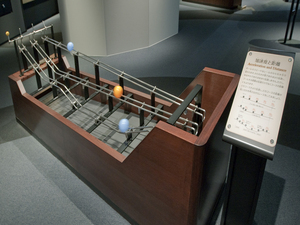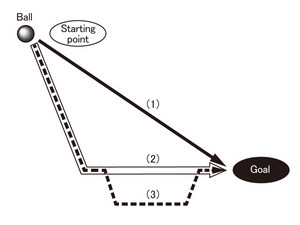Nagoya City Science Museum
TOP > Exhibition Guide > Keyword Search > Starting with "D" > dynamics > Acceleration and Distance
Acceleration and Distance



Purpose of Exhibition
This is an experiment to see which course a ball finishes the quickest out of three courses below, whose starting point and goal are set at the same place but each course has a different route. You can see the effect caused by the difference between acceleration and route.
Additional Knowledge
A ball race will be run in the exhibit. The starting point and goal are set at the same places. You will compete at the three different courses below. 1: A course with a slope straight down from start to goal2: A course in which a ball falls straight down to the same height as its goal and runs a flat path to its goal.
3: A course in which a ball falls lower than its goal, runs a flat path, and then goes up the slope before reaching the goal.
Course 1 has the shortest course of all. Since it is the shortest, there is a possibility that a ball could reach the goal the fastest. However it has slow acceleration, so you cannot expect the speed to be fast.
Course 2 has a steep slope at the beginning and gains speed. Since the ball runs the flat path quickly, it may possibly hit the goal fastest. But its disadvantage is that it has a relatively longer path than that of course 1.
Course 3 has the highest speed because the ball falls lower than its goal. Since it can run the path with the highest speed, it could possibly finish the quickest. However, the long path and the uphill before the goal can be a setback.
Which course the ball can go fastest on is up to the layout of courses. You will immediately see which course is the fastest if you try. However, which course above is the fastest depends upon the difference in height, the angle of the steep slopes, and how low you set the path which goes below goal.
Article by Yoshitaka Yamada, curator
